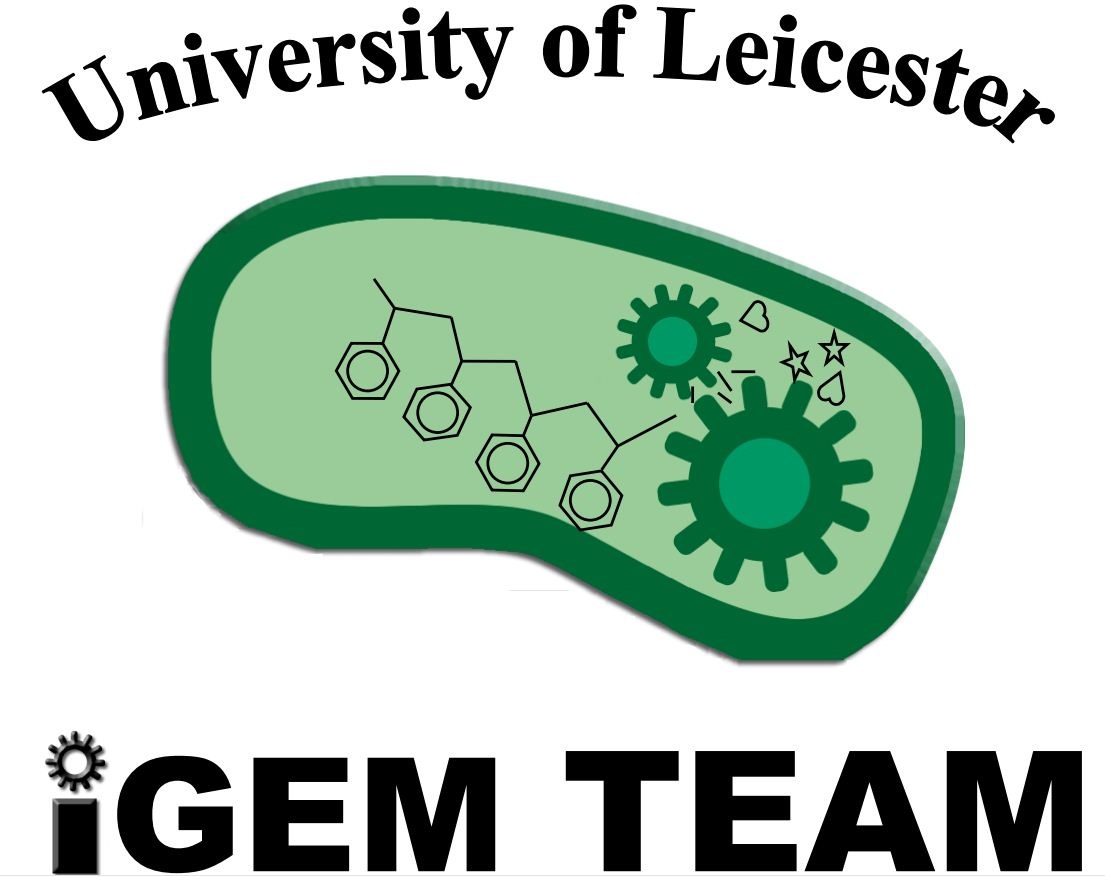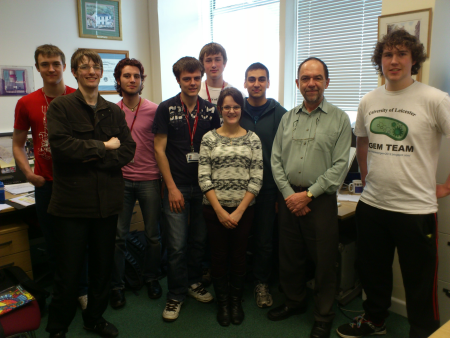Team:Leicester
From 2012.igem.org
Ladybird136 (Talk | contribs) |
|||
| Line 23: | Line 23: | ||
{|align="justify" | {|align="justify" | ||
| - | |The team consists of a computer scientist, | + | |The team consists of a computer scientist (Emily), two organic chemists (Reema and Mohamed) , One Biological Scientist (Christopher), two geneticists (Anthony and Nathan), and three biochemists (William, Luke and Philip). The whole team have been inducted into the Genetics Department at the University of Leicester. This means everybody is cleared to work in the lab and all of us can contribute to the hands-on experiments. |
| + | experiments. | ||
| Line 37: | Line 38: | ||
| - | <br/>The | + | <br/>The roles above were allocated to make the workload lighter, and to give everyone a specific part to play in the team. This way everyone can be working at the same time without clashing for space in the lab. |
| + | |||
|[[Image:Leicester_logo.png|400px|thumb|left]] | |[[Image:Leicester_logo.png|400px|thumb|left]] | ||
| Line 43: | Line 45: | ||
| | | | ||
| - | Our project is about trying to reduce the waste going into landfill sites by engineering a bacteria to degrade | + | Our project is about trying to reduce the amount of Expanded PolyStyrene (EPS) waste going into landfill sites by engineering a bacteria to degrade this long lived material. Some bacteria have been found to form biofilms on polystyrene, indicating that it may be being degraded by micro-organisms, albeit at a very slow rate. We have several different parts to our project, including a citizen science experiment (CSE). |
| - | Over the summer the team | + | Over the summer the team intend to isolate the genes involved in the EPS degradation pathway. These can then be used to develop an improved pathway, for example by making modifications to the enzymes that act on polystyrene. One approach is to modify existing enzymes that are able to degrade aromatic and aliphatic hydrocarbons to accommodate polystyrene into their active sites. The bacteria that have these new genes inserted should then be able to degrade polystyrene at a much higher rate than naturally occurring bacteria. |
| - | + | If we can build a bacteria that can degrade the polystyrene it could potentially be applied to landfill sites to degrade the polystyrene in situ, reducing the amount of this long-lasting waste. Alternatively the bacteria could be used as a first step in polystyrene recycling by engineering it to produce chemical intermediates that slot into other synthetic pathways, reclaiming the valuable fossil hydrocarbons the polystyrene was originally made from. | |
| - | |||
|[[Image:Leicester_team.png|left|frame|From left to right: Will Harrison, Nathan Hanna, Anthony Cox, Chris Morton, Luke Thompson, Grace Hodson, Neil Nathwani, Sir Alec Jeffreys, Philip Higgs.]] | |[[Image:Leicester_team.png|left|frame|From left to right: Will Harrison, Nathan Hanna, Anthony Cox, Chris Morton, Luke Thompson, Grace Hodson, Neil Nathwani, Sir Alec Jeffreys, Philip Higgs.]] | ||
Revision as of 08:23, 15 July 2012
The team consists of a computer scientist (Emily), two organic chemists (Reema and Mohamed) , One Biological Scientist (Christopher), two geneticists (Anthony and Nathan), and three biochemists (William, Luke and Philip). The whole team have been inducted into the Genetics Department at the University of Leicester. This means everybody is cleared to work in the lab and all of us can contribute to the hands-on experiments.
experiments.
| |
|
Our project is about trying to reduce the amount of Expanded PolyStyrene (EPS) waste going into landfill sites by engineering a bacteria to degrade this long lived material. Some bacteria have been found to form biofilms on polystyrene, indicating that it may be being degraded by micro-organisms, albeit at a very slow rate. We have several different parts to our project, including a citizen science experiment (CSE). Over the summer the team intend to isolate the genes involved in the EPS degradation pathway. These can then be used to develop an improved pathway, for example by making modifications to the enzymes that act on polystyrene. One approach is to modify existing enzymes that are able to degrade aromatic and aliphatic hydrocarbons to accommodate polystyrene into their active sites. The bacteria that have these new genes inserted should then be able to degrade polystyrene at a much higher rate than naturally occurring bacteria. If we can build a bacteria that can degrade the polystyrene it could potentially be applied to landfill sites to degrade the polystyrene in situ, reducing the amount of this long-lasting waste. Alternatively the bacteria could be used as a first step in polystyrene recycling by engineering it to produce chemical intermediates that slot into other synthetic pathways, reclaiming the valuable fossil hydrocarbons the polystyrene was originally made from.
| |
| Photo with Sir Alec Jeffreys |
 "
"

